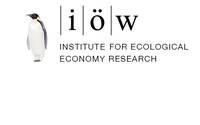Work Package 2: Institutional Analysis
Starting Point: The Contribution of Institutional Economics
The economic literature on climate adaptation deals with the optimal (cost-minimizing, welfare-maximizing) adaptation to climate change. By this, its traditional toolkit is pushed to the limit. Of great interest seem to be approaches that explore the mechanisms for allocating and organizing the use of scarce resources. Among those, institutional economics, focusing on formal and informal allocation rules or “institutions”, seem the most promising.

The Aim: Analyzing determinants and obstacles for institutional change in successful climate change adaptation
Relying on specific situations of physical threat, the subproject observed determinants and obstacles for institutional change as part of processes of adaptation to climate change. Whenever new threats make climate adaptation necessary, the question was, under which conditions are present institutions able to bring about the necessary change, and when should new forms of organization be used/ required. Success factors and barriers for adaptation were derived from such an analysis.
Methods: Case study comparison and in-depth social research
At first, the study addressed the way municipalities in the study areas that experience a threat from climate change deal with the necessities of climate change adaptation. Some municipalities relied on planning regulations and administrative procedures, while others engaged in new and more integrated decision-making processes. From these differences in meeting the adaptation challenge, key-factors were distilled by means of a “Qualitative Comparative Analysis (QCA)”.
Building on this analysis, an in-depth exploration of selected adaptation processes and bundles of measures examined factors enabling or hampering design and subsequent implementation processes. Participant observation and semi-structured interviews assessed the role of individual behavior, collective and state action as well as the hurdles and potentials for cooperation of different actors across levels and sectors.




